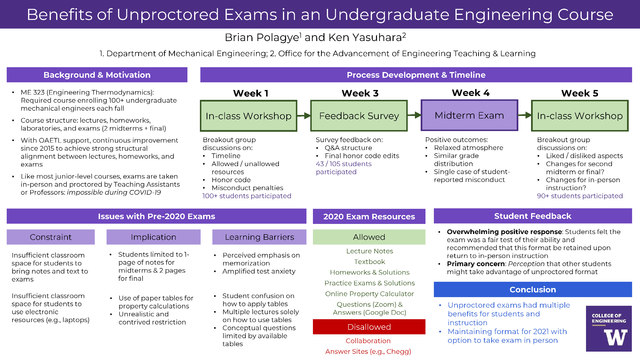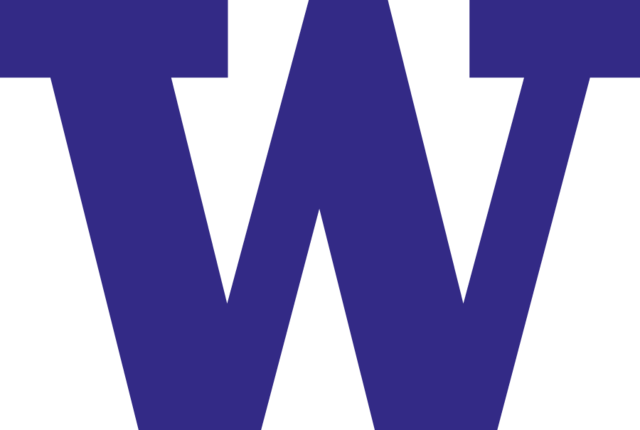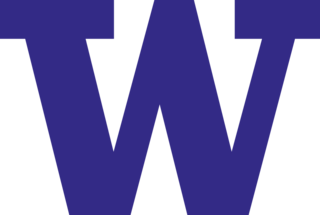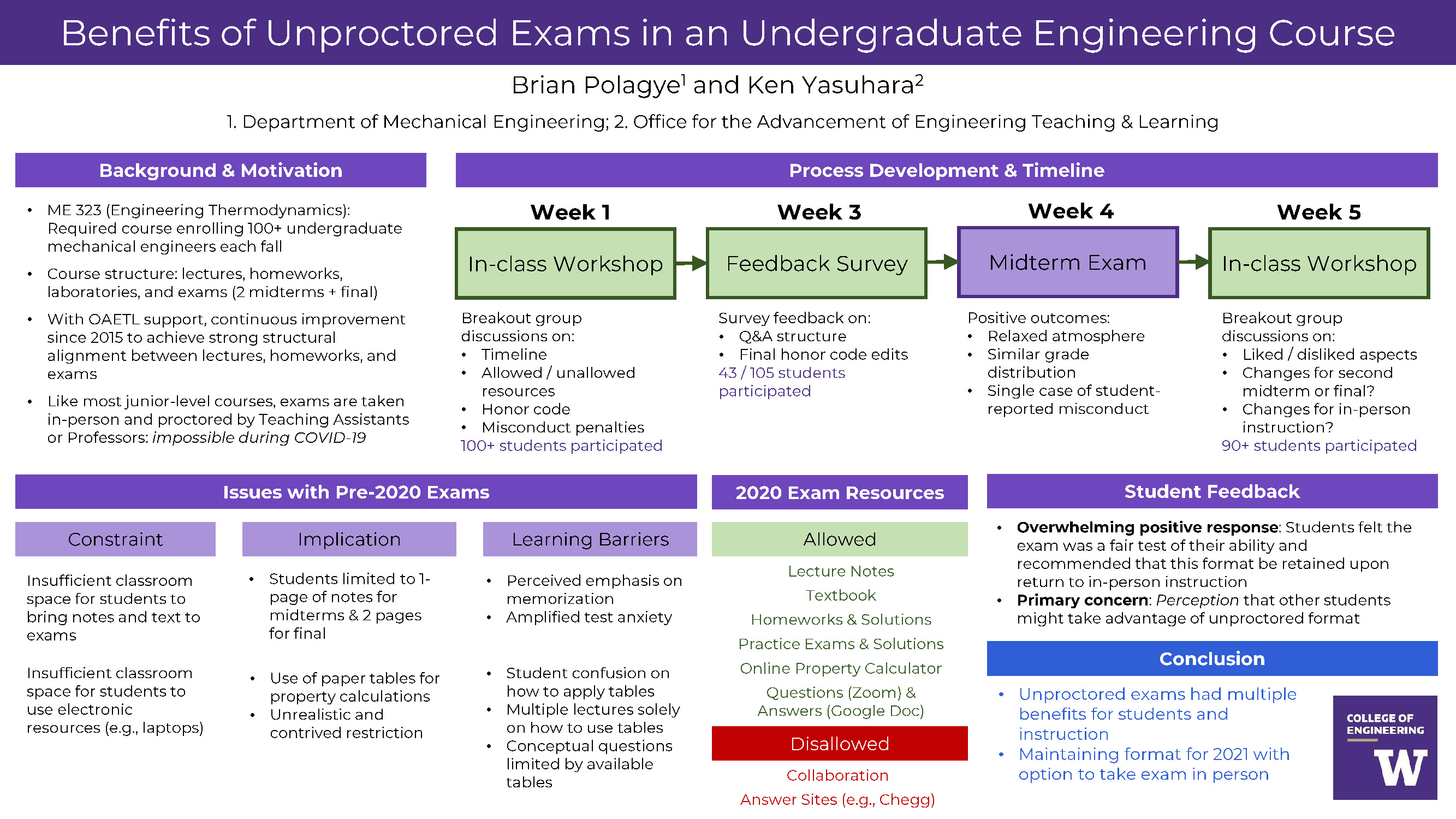Skip to main contentResource added 
We attribute the success of this model to three factors that could be implemented independently in other courses:
Benefits of Unproctored Exams in an Undergraduate Engineering Course

Full description
Video Presentation
Authors:
- Brian Polagye, Mechanical Engineering, UW Seattle
- Ken Yasuhara, Office for the Advancement of Engineering Teaching & Learning, UW Seattle
Abstract:
This autumn, we switched to synchronous, but unproctored, exams in Engineering Thermodynamics, a required, junior-level course enrolling over 100 students in Mechanical Engineering. This was catalyzed by the pandemic transition to online learning but yielded so many benefits that we are likely to retain the format for in-person learning. Significant benefits reported by students included access to a broader range of materials during the exam, increase in available work space, and a general decrease in exam stress.We attribute the success of this model to three factors that could be implemented independently in other courses:
- Guided by Wulff et al.’s notion of alignment for learning and through refinements responding to mid-quarter and final course feedback, we aimed for strong structural alignment among lectures, homeworks, and exams. Student feedback clearly indicates we were successful.
- By providing students with access to a broad set of materials during the exam, we made it clear that we wanted them to succeed. Exam alignment and in-exam access to materials are consistent with expert guidance on reducing academic misconduct, and students perceived the exam to be a fair assessment of their knowledge.
- By developing the exam honor code and rules as a class, providing students a forum for anonymous feedback, and revisiting exam process after the first midterm, we provided the students with agency to establish a set of equitable rules and make necessary adjustments.
Poster PDF
View a PDF version of the poster in Google Drive to enlarge the image or download a copy.
Comments
The presenter for this poster will be available to respond to comments during Poster Session 2 on April 20, 3:45-4:30 p.m.Comments
Log in to view and add comments.
Annotations
No one has annotated a text with this resource yet.
- typeImage
- created on
- file formatjpg
- file size927 kB
- publisherUniversity of Washington
- rights


